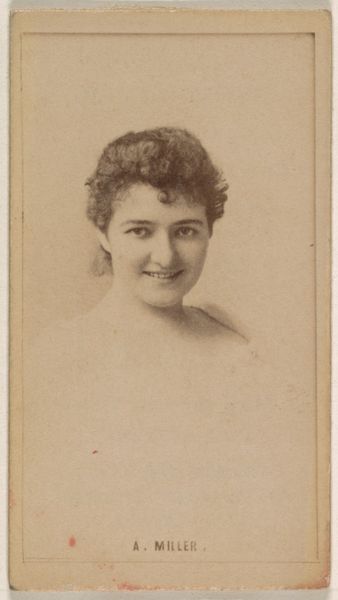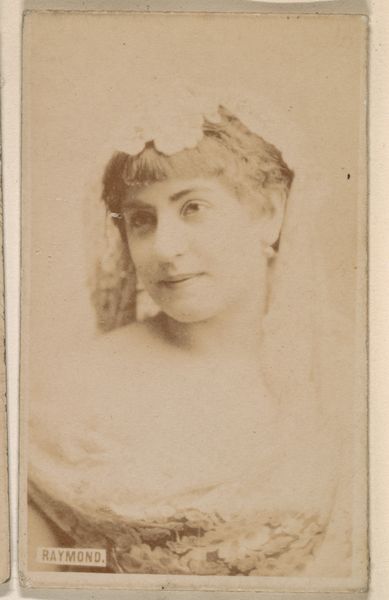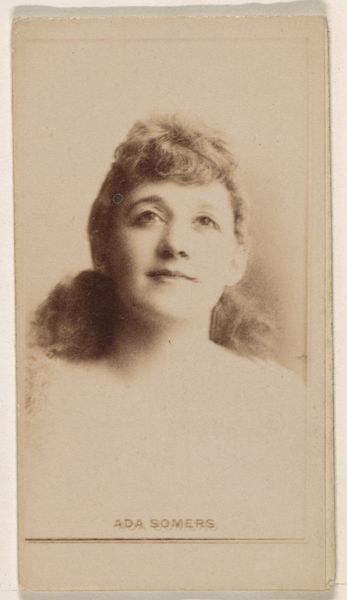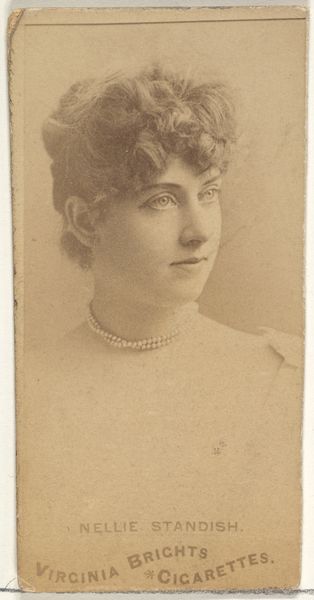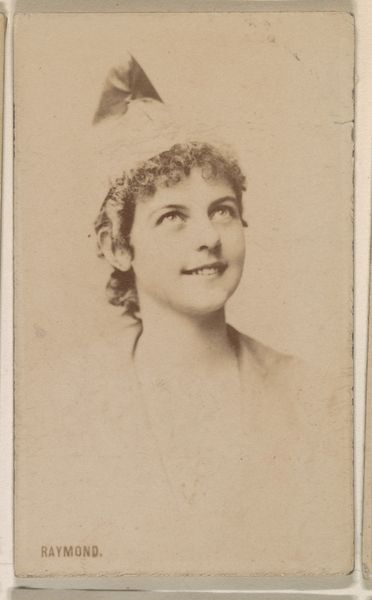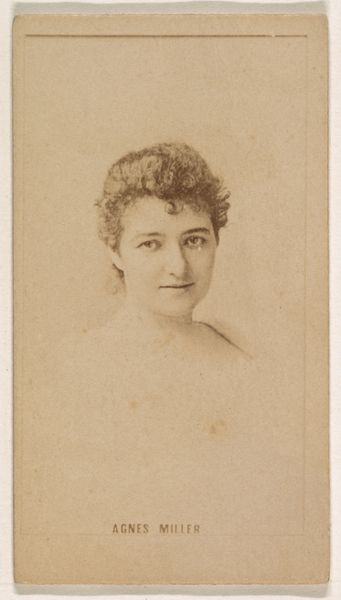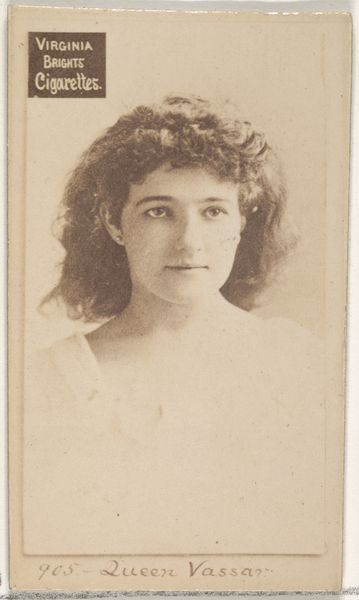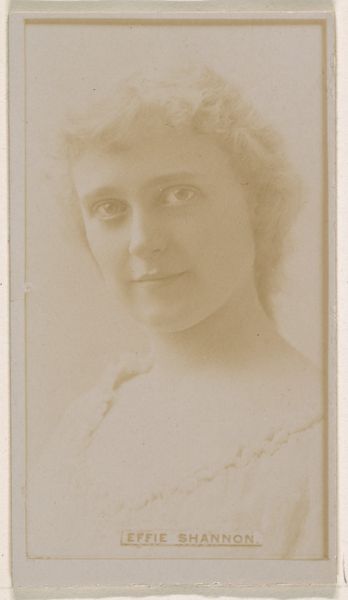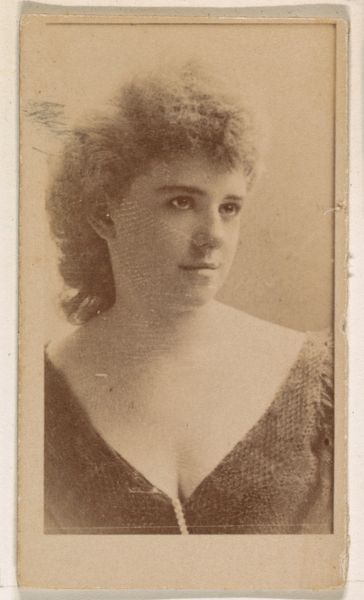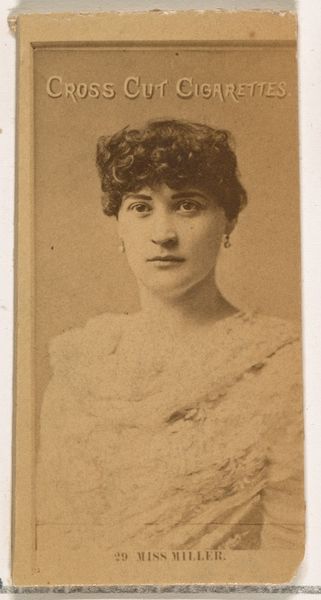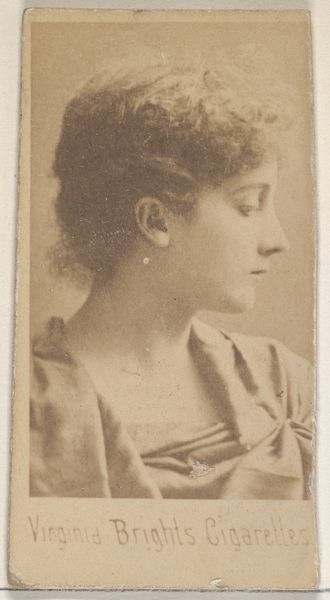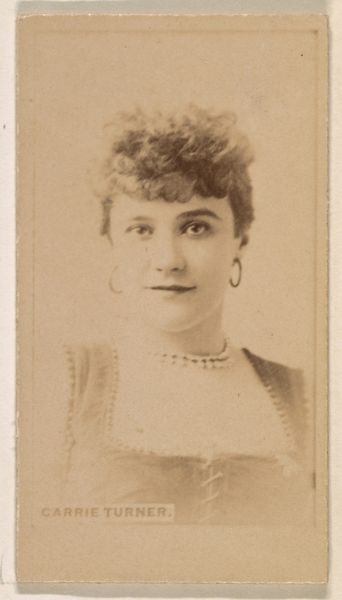
Florence P. Stevenson, from the Actresses series (N245) issued by Kinney Brothers to promote Sweet Caporal Cigarettes 1890
0:00
0:00
drawing, print, photography
#
portrait
#
drawing
# print
#
photography
#
portrait drawing
Dimensions: Sheet: 2 1/2 × 1 7/16 in. (6.4 × 3.7 cm)
Copyright: Public Domain
Curator: Up next, we have a piece entitled "Florence P. Stevenson, from the Actresses series," dating back to 1890. It’s fascinating, originally a promotional print distributed by Kinney Brothers to push their Sweet Caporal Cigarettes. Editor: There’s an ethereal quality here—almost dreamlike. The sepia tone lends it a certain vintage charm, making you feel like you are peering into a distant, glamorous past. The overall texture looks soft. Curator: The Kinney Brothers, mainly known as a Tobacco company, clearly leveraged the popularity of actresses at the time, and they adopted a drawing of a portrait using a photographic print. A simple, yet effective, marketing ploy! I suppose it is aimed at an artistic highbrow audience due to the choice of a portrait-style depiction rather than focusing purely on commercial branding of its products. Editor: The composition strikes me, too. There’s something intriguing in how she’s gazing slightly off to the side, lost in her own thoughts, a private world we can only glimpse. How does the angle of her face play into our reading of the subject and image? Curator: Indeed, notice how the delicate strokes of the drawing capture not just likeness but a mood, a feeling of introspective serenity and composure in a stage actress promoting cigarette brands, while photography can highlight much better objective or accurate representations of someone in real life. Also, the material has a very rough quality; as you mentioned, that definitely speaks to that turn-of-the-century aesthetic. Editor: It really does prompt reflections about beauty standards, or promotion, fame and identity. Even the fragility of the physical object— the aged paper and worn edges, speaks to how fame is often fleeting but art captures immortality. The image and its support become a relic themselves. What were your thoughts when seeing the portrait for the first time? Curator: Well, that such portraits, mass-produced as marketing collateral for cigarette brands back then, now have found their way into revered art institutions like the Met. That journey and transformation gives it so much more richness and resonance. It shows how value changes, evolves, defies intentions.
Comments
No comments
Be the first to comment and join the conversation on the ultimate creative platform.


